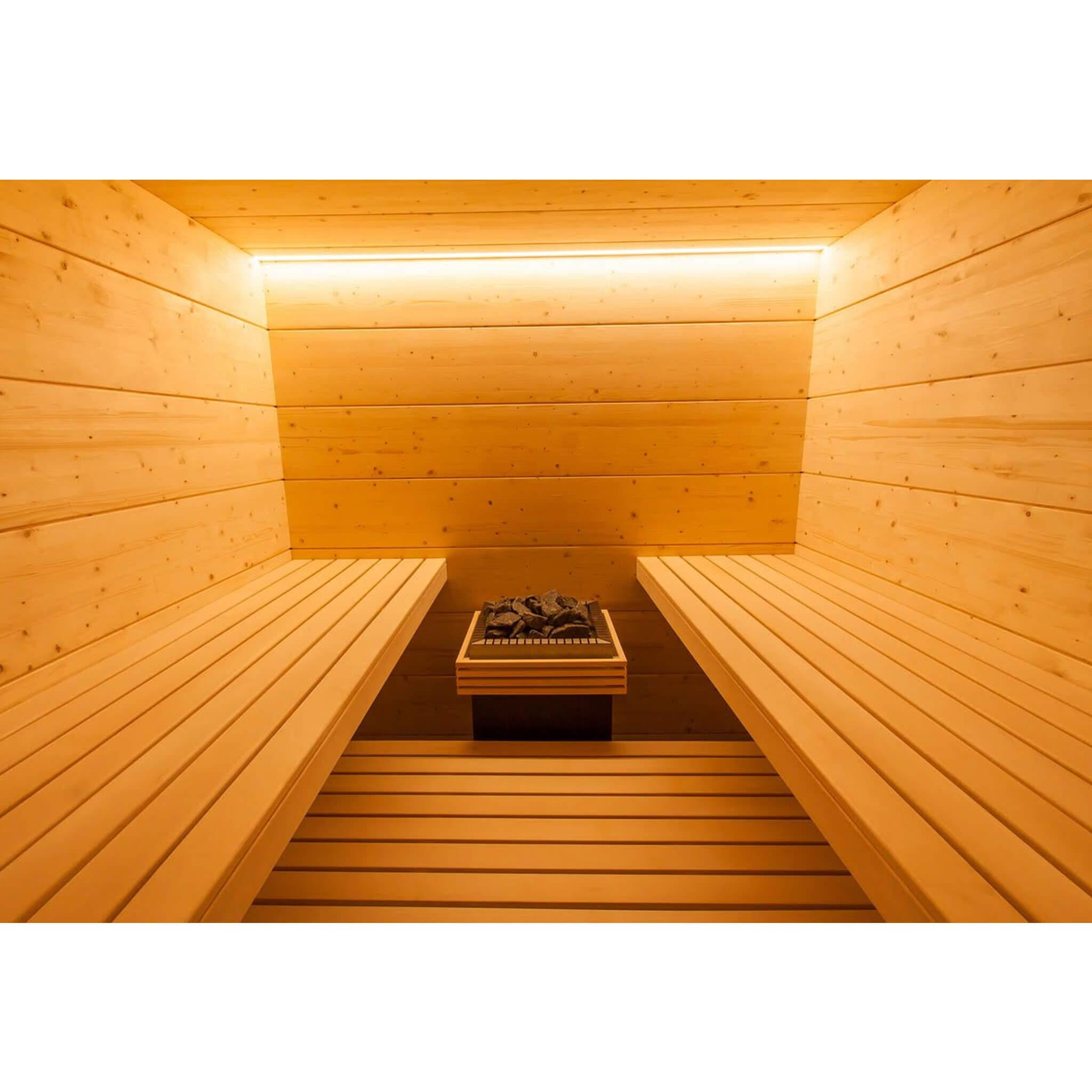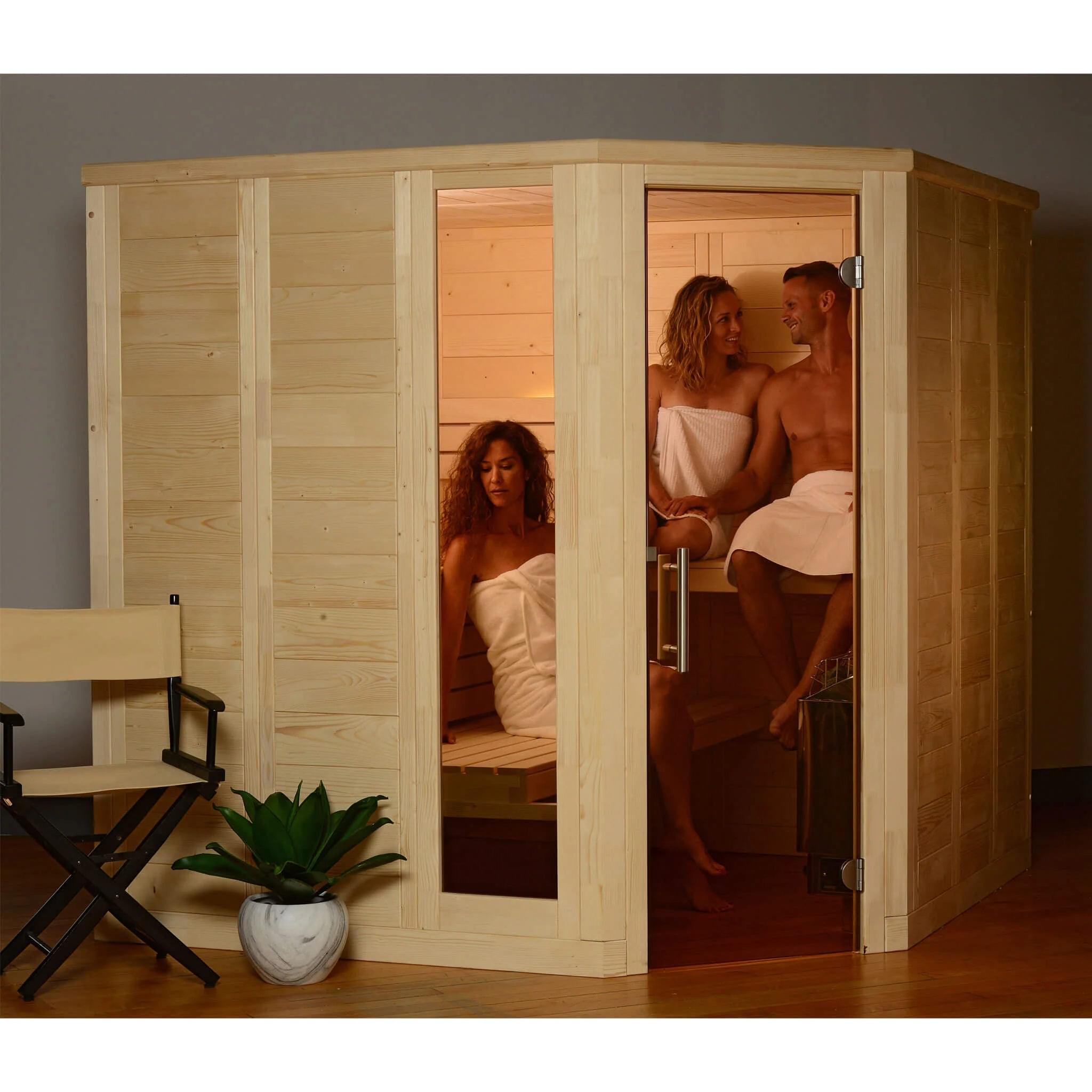Traditional Sauna for Beginners
Table of ContentsNot known Details About Traditional Sauna About Traditional SaunaThe Ultimate Guide To Traditional SaunaThe 9-Second Trick For Traditional Sauna
The majority of the weight shed in a sauna is water loss and is re-gained upon rehydrating. However, certainly sauna can be a vital part of a healthy weight-loss program. To take a look at the differences between typical and IR saunas, I will certainly divide these into verifiable, academic, and made distinctions.Therefore, the hottest factor in the saunawhich goes to the ceiling straight over the sauna heateris commonly in between 185 and 190 F. Traditional Sauna. Claims that a traditional sauna exceeds 200 F is simply not real and not applicable for electric saunas sold in the US. The temperature for a far-infrared sauna is generally established in between 120 and 140 F; nonetheless, unlike the typical sauna, the goal in and IR area is not to achieve a heat
Due to this, the temperature difference is virtually pointless, given that extreme sweating leads to both sauna types, but the technique of warming the body is various. In an IR sauna the bather will really feel warm and will sweat profusely, but at a lot reduced temperature levels. Thus, if the objective is to spend longer amount of times in the sauna, the IR sauna is a good selection.

Traditional Sauna Fundamentals Explained
When the high temperature is attained, the components cycle on and off to keep the heat. Many traditional sauna customers enjoy putting water over the rocks to produce heavy steam to elevate sauna humidity levels. The benefits of pouring water over the rocks consist of: making the room extra comfy, dampening the nasal flows, and allowing the usage of aromatherapy by mixing important oils with the water.
In a far-infrared sauna, the warm waves permeate the body to efficiently heat up the body and raise the body core temperature level. To accomplish this enhanced temperature level, Far-infrared emitters produce infrared energy which is close to the exact same wavelength as that which the body normally emitsoften described as the "Crucial Variety" of 7 to 14 microns), so the energy is well received by the body.
When pop over to this web-site the energy gets in the body, it creates the body temperature level to boost and eventually leads to perspiration. In an infrared sauna it is necessary for the emitters/heaters to continue to be on virtually frequently. Given that there is no mass of rocks to preserve warm, the sauna will cool if the emitters shut down.
As pointed out above, the sauna bather in an infrared area desires to position himself in front of running emitters to get maximum take advantage of the warm. The home heating time for the 2 spaces can be very different, depending on just how the spaces are used. For a conventional sauna, a bather should permit 30-40 minutes for the area to accomplish a desired temperature level and to correctly pre-heat the rocks.
Unknown Facts About Traditional Sauna
A well created sauna will normally attain a temperature of 150-160 F in about 30-40 minutes. For hotter temperature levels, the area might require to heat for a longer period.
To some, 15 minutes was "squandered" while the infrared power warmed the timber panels as opposed to heating a body, while others find a pre-heated room to be much more comfortable and believe a raised beginning temperature level is essential to start perspiring. The length of recommended use for each room is around the exact same (10-15 mins per session); however, due to the lower air temperatures and the ability to feel the effects of infrared heat faster than a typical sauna, it is not unusual for a person to spend a total of 20-30 minutes in an sites infrared sauna.
Standard saunas often tend to be bigger (hence utilize more power) than infrared saunas, although typical saunas are absolutely readily available in one and 2 individual dimensions also. For a two-person typical sauna, 5x6 or 5x7 size is most preferred. The leading bench can easily seat two or 3 people and is additionally long enough to lie down throughout the sauna session.


The average price per kWH of electrical energy in the united state is around $0.11, so a 4.5 kW heating system will set you back roughly $.50 to compete one hour, if the heater runs constantly for one hour. Normally a sauna heater will certainly compete 75% of the very first hour and 50% of subsequent hours on considering that the elements cycle once the set temperature level is achieved.
Traditional Sauna - Truths
A 2 person far-infrared room is normally physically smaller sized than a traditional sauna, usually regarding 4' x 4' or smaller sized. The IR heater is generally 1.5-1.7 kW utilizing a 120 volt 15 amp plug-in solution. Considering that the area can be used earlier than a sauna space, we will certainly assume the space is made use of for to of an hour including warm up time.
There is a rarely gone over difference in the social experience between the two rooms. While our society has actually shed a few of the social advantage of the standard sauna more tips here experience, it can be extremely socially satisfying. From household time in the sauna, to heart-felt discussions with loved ones, to sauna partiesthe standard sauna experience can cause intimate mingling.
Many greater end infrared areas include tinted light therapy, sound systems and full-glass fronts.
Comments on “How Traditional Sauna can Save You Time, Stress, and Money.”